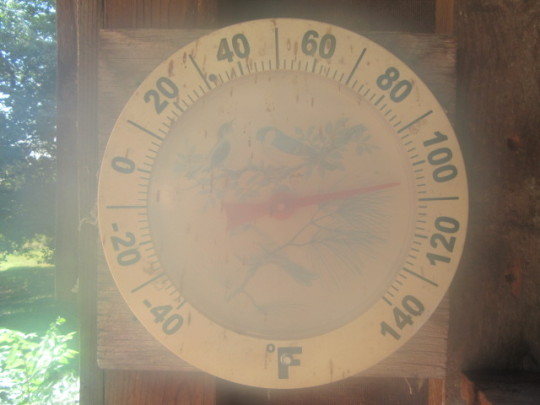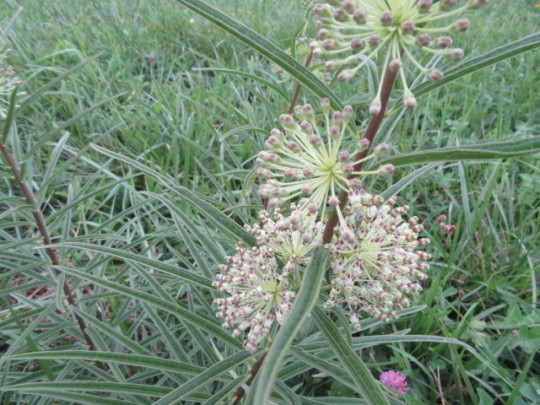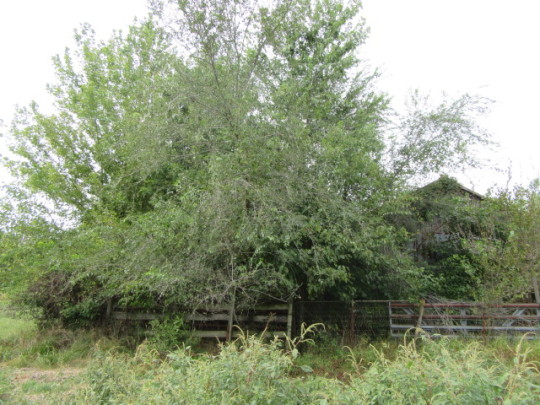#asclepias hirtella
Explore tagged Tumblr posts
Text

Glass slide of a Tall Green Milkweed (Asclepias hirtella). This plant matures to 4-inches in height and has white-green flowers that tend to be the most prolific of the upland Milkweeds. It has narrow, alternate leaves and each umbel has up to 100 flowers. This collection was donated by John Watts, Resource Manager at the Metro Parks District Office in Westerville, Ohio
#tall green milkweed#Asclepias hirtella#milkweed#upland milkweed#walter a tucker#walter a. tucker#glass slide#photo#photograph#flowercore#cottagecore#pink
0 notes
Text

My dry-site prairie basket is coming right along. These are all narrow-rooted species that love full sun and fast drainage
From top clockwise:
Lanceleaf coreopsis (Coreopsis lanceolata)
Palid coneflower (Echinacea pallida)
Evening primrose (Oenothera biennis)
Tall green milkweed (Asclepias hirtella)
Center, my new favorite, Illinois bundle flower (Desmanthus illinoiensis)
#midwest native plants#native plants#container gardening#lanceleaf coreopsis#coreopsis lanceolata#pale purple coneflower#echinacea pallida#evening primrose#oenothera biennis#tall green milkweed#asclepias hirtella#illinois bundle flower#desmanthus illinoensis
1 note
·
View note
Text
Wildflower Walk ?
Hello everyone! I hope this post finds you all well. I apologize for not posting for a while. It has been a weird summer for sure with the heat and drought. I was busy with the garden picking sweet corn and green beans right up until August 17. Somehow I managed to get 455 ears of sweet corn in the freezer, and thanks to the ‘Provider’ green beans, 34 quarts of green beans. Of course, not all the…

View On WordPress
#Ambrosia bidentata (Lanceleaf Ragweed)#Asclepias hirtella (Prairie/Tall Green Milkweed)#Asclepias syriaca (Common Milkweed)#Bidens aristosa (Tickseed Sunflower or Bearded Beggarticks)#Datura stramonium (Jimson Weed)#Elephantopus carolinianus (Leafy Elephant&039;s Foot)#Erechtites hieraciifolius (Fireweed/Pilewort)#Erigeron annuus (Annual or Daisy Fleabane)#Etc.)#Eupatorium serotinum (Late Boneset)#Impatiens capensis (Jewelweed)#Lespedeza cuneata (Chinese Bushclover)#Persicaria hydropiper (Water Pepper)#Persicaria pensylvanica (Pinkweed)#Phytolacca americana (American Pokeweed)#roton capitatus (Hogwort/Woolly Croton/Goatweed)#Rudbeckia hirta (Black-Eyed Susan)#Sida spinosa (Prickly Fanpetals)#Solanum sarrachoides (Hairy Nightshade)#Solidago sp. (Goldenrod)#Symphyotrichum lateriflorum (Calico Aster)#Tridens flavus (Purpletop#Tripsacum dactyloides (Eastern Gamagrass)#Verbesina virginica (White Crownbeard/Frostweed)#Vernonia missurica (Missouri Ironweed)
0 notes
Text
Swan plants is a lovely name for them. What species do you have in New Zealand? In my area of Canada/USA, we have about 16. I’m collecting as many different species as I can and planting them in different parts of the garden. It’s a natural protection against pests and diseases, since they can’t just jump from, say, the swamp milkweed to the green comet milkweed. Haven’t had any monarchs lay eggs on them yet, but I’m looking forward to it. The bees, wasps, flies, etc. sure love them, though. And the flower clusters can be boiled down into syrup--necessary once they take off; my swamp milkweed, which I’ve had the longest of my milkweeds, is getting out of control with its spreading. But thankfully the young shoots are edible after cooking, so I’ll do something with those growing in areas I don’t want them in when they coming up.
if you have swan plants/milkweeds that grow like weeds in your garden, (after any caterpillars have left as butterflies), carefully dig out from the roots and give to neighbours or local markets! swan plants are in major shortage in many countries, getting them from stores is often expensive, and there's actually a massive problem of stores and plant nurseries protecting the plants with pesticides and fungicides that actually kill the caterpillars who eat the plant. so, garden plants are really good with avoiding that (as long as they're orange aphid free). i'm very grateful to the random lady who's just letting me cut and dig swan plants in her garden.
monarchs are at risk of ending up threatened, and in fact, the migratory monarch of the americas was classified as endangered in august last year. so, always good to have swan plants in your gardens. perhaps only a few though, because monarchs will always lay too many eggs per plant and there is always a large caterpillar die off once things run out, and it's easier to save and hand rear some caterpillars once the garden stock is eaten if there's just a handful. i can do this because there was only 4-5 caterpillars remaining on our plants. it's part of nature and carrying capacity, but it's still sad so i try to avoid it haha.
#if we called them swan plants instead of milkweeds...#Asclepias amplexicaulis would be clasping swan plant#Asclepias exultata would be poke swan plant or tall swan plant#Asclepias hirtella would be tall green swan plant or green swan plant#Asclepias incarnata would be swamp swan plant or pink swan plant#Asclepias ovalifolia would be oval leaf swan plant or dwarf swan plant#Asclepias purpurascens would be purple swan plant#Asclepias quadrifolia would be fourleaf swan plant#Asclepias rubra would be red swan plant#Asclepias speciosa would be showy swan plant#Asclepias sullivantii would be prairie swan plant#Asclepias syriaca would be common swan plant#Asclepias tuberosa would be butterfly swan plant#Asclepias variegata would be redring swan plant or white swan plant#Asclepias verticillata would be whorled swan plant#Asclepias viridiflora would be green comet swan plant or green-flowered swan plant or green swan plant#Asclepias viridis would be green antelopehorn swan plant
20 notes
·
View notes
Text
Note To Self: Oklahoma Milkweeds
Asclepias Quadrifolia (Four-Leaf Milkweed)
Asclepias Macrotis (Long hood Milkweed)
Asclepias Pumila (Plains Milkweed)
Asclepias Incarnata (Rose / Marsh / Swamp Milkweed)
Asclepias Oenotheroides (Sidecluster Milkweed)
Asclepias Viridiflora (Short Green Milkweed)
Asclepias Engelmanniana (Engelmann's Milkweed)
Asclepias Verticillata (Whorled Milkweed)
Asclepias Syriaca (Common Milkweed)
Asclepias Sullivantii (Prairie Milkweed)
Asclepias Variegata (White Milkweed)
Asclepias Subverticillata (Horsetail Milkweed)
Asclepias Involucrata (Dwarf Milkweed)
Asclepias Uncialis (Wheel Milkweed)
Asclepias Tuberosa (Butterfly Weed)
Asclepias Stenophylla (Narrow-leaf Milkweed)
Asclepias Hirtella (Tall Green Milkweed)
Asclepias Purpurascens (Purple Milkweed)
Asclepias Latifolia (Broad-Leaf Milkweed)
Asclepias Amplexicaulis (Sand Milkweed)
Asclepias Amplexicaulis (Clasping milkweed)
Asclepias Asperula (Spider Milkweed)
Asclepias Viridis (Green Milkweed)
Asclepias Obovata (Pineland Milkweed)
Asclepias Speciosa (Showy Milkweed)
1 note
·
View note
Photo


Asclepias hirtella
Green rocket milkweed
HD meadow is home to a few of the sandier soil loving species, A. viridis and A amplexicaulis, and although this species can be found in barrens that contain heavier soil and also short grass prairies and dry portions of tall grass prairies, it still does much better in sandier spots.
21 notes
·
View notes
Photo








Old field flora: bluestems and goldenrods, tall green milkweed, ironweed, wild carrot, purple beebalm, and many more
29 notes
·
View notes
Text
Ok so basically long story short
The person who responded (an Environmental Horticulture specialist I found by looking at my extensions website) doesn't really grow obscure milkweeds and thus doesn't know where to find seeds
BUT
She CC'ed a Master Gardener onto the email who's into growing milkweeds from seed!! Who may know where to point me to!
She (the Environmental Horticulture specialist) doesn't know of any researchers working with different milkweeds right now so wouldn't know of anyone to ask
Also for practical purposes Longleaf Milkweed (Asclepias longifolia) and Tall Green Milkweed (Asclepias hirtella) are the same plant. if I were a plant taxonomist who wantred to write a peer reviewed paper for a scientific journal I'd need to do DNA testing to see if they're the same. But Tall Green Milkweed (Asclepias hirtella) is fine to plant in Florida
She hopes the info is helpful and says she learned something looking the stuff up so YAY
....so do I respond to the email or do I just leave it, I'm awkward again--
I GOT A REPLY FROM ONE OF THE EXTENSIONS OFFICE PEOPLE I EMAILED
24 notes
·
View notes
Video
tumblr
For the past couple of months, I have been working on a degraded prairie in Arkansas. Most of the prairie is dominated by invasive fescue grass and invasive Bermuda grass, among others. Luckily, the prairie has recently received an herbicide application to help manage the invasive grasses, but it will be a while before the prairie is restored. The video and photos featured are from before the herbicide application.

Blue vervain (Verbena hastata).

A gray hairstreak ( Strymon melinus) in the foreground and an eastern tailed-blue (Cupido comyntas) in the background enjoying some white clover (Trifolium repens). White clover is common in lawns, fields, and many other habitats in North America, but it’s actually an introduced species from Europe.

Green antelopehorn (Asclepias viridis).

Tall green milkweed (Asclepias hirtella).

A view of one section of the degraded prairie. The majority of the prairie was used for cattle grazing at some point in its history.

American lotus (Nelumbo lutea) growing in a pond on the prairie.
#prairie#blue vervain#butterfly#milkweed#restoration#lotus#pond#white clover#biology#lepidoptera#ecology#botany#wildflowers
26 notes
·
View notes
Photo







AAAAaaaaaaaaaaah!! A friend is challenging us to find flowers that look like fireworks (let’s be serious, it’s the other way around). Asclepias, or milkweed, is one of my all time absolute favorite genera. “Why????” you may ask? WELL LET ME TELL YOU.
First of all, look at these magnificent beasts! LOOK AT THEM!! Their flowers are almost always showy and pompomy and either delicately colored or flamboyantly in your face. Their flower structure is so unique! Only the FEET of pollinators can crack those petals (which is sad news for Asclepias, really) to get some pollen for distribution. Bumble bees are especially good at it. They are EXCLUSIVELY the host plant for monarch butterflies (Danaus plexippus). Most of them have latex milky sap. Most of them contain mild toxins! Their seed pods are big biffy things filled with flat seeds arrayed like scales! When they burst open they get all poofy and disperse in the wind (or by Misha as she turns 1 pod into handfuls of fluff with glee). Their leaves can be alternate, opposite, OR whorled (Asclepias laughs at your taxonomic indexing rules). They usually smell amazing. Like.. holy hell how does something smell this good amazing!
Every species here is native to the Great Lakes region. This isn’t comprehensive. There are some I didn’t manage to get photos of.... yet. Pictured, in order: 1) A. incarnata - swamp milkweed 2) A. hirtella - tall green milkweed 3) A. syriaca - common milkweed 4) A. tuberosa - butterfly milkweed 5) A. viridiflora - green milkweed 6) A. virticillata - whorled milkweed 7) A. amplexicaulis - clasping milkweed (Bonus story: There was a boy who was once DEAD SET on getting me flowers. He kept asking me which was my favorite. I told him milkweed was my favorite. He went to many many florists before one clued him in that he’d have to wait until July and find a likely ditch to get it. I really wasn’t interested in dating him. I was honest. He was persistent. No regrets.)
10 notes
·
View notes
Text
Monarch Caterpillars 2018
6/5/18 They are growing so big we had to add a third container today.

chomp chomp chomp chomp chomp chomp chomp chomp chomp chomp

om nom nom nom nom nom nom nom nom nom nom nom nom nom

Last year Robin raised 24 butterflies total. This year we have 26 caterpillars in the first hatch. I think the campaign to plant milkweeds is helping.
Here are the types of milkweeds which do best near Chicago:
The common milkweed, Asclepias syriaca, tall, vigorous, and hardy, likes full sun, can tolerate dryness and poor soil; pink flowers smell like spice cake. It’s invasive and can force its way up through asphalt, so be careful where you plant it.
Swamp milkweed, Asclepias incarnata, shade-tolerant, hardy and less invasive, prefers not to dry out, smaller than syriaca, with narrow leaves. Pink flowers that smell like sugar or white flowers that smell like chocolate. Our Monarchs seem to prefer these to syriaca.
Scarlet or Mexican Milkweed, Asclepias curassavica, similar in form and habit to incarnata but with red and yellow flowers. Not hardy here, which is actually an advantage as it prevents the hosting of parasite Ophryocystis elektroscirrha. Seeds collected in the fall can be sown in spring.
This year as an experiment we have planted Asclepias hirtella, Asclepias sullivantii, Asclepias exaltata, Asclepias verticillata, and Asclepias tuberosa (butterfly weed). We will report on their progress.
0 notes
Photo

Asclepias hirtella (Green milkweed)
#Asclepias#hirtella#asclepias hirtella#green#milkweed#green milkweed#wild#flower#flowers#wildflowers#wildflower#natives#native#plant#plants#wild flower#wild flowers#native plants#native gardening#us natives#us wildflowers#garden#gardens#gardening#home and garden#perennial#perennials
1 note
·
View note
Text
Six On Saturday-Short Walk on the Wild Side
Six On Saturday-Short Walk on the Wild Side
Asclepias hirtella (Tall Green Milkweed) Hello everyone! I hope you are all doing well. We had a nice week with temperatures not too unbearable at all. I took a walk through the hayfield a couple of days ago to check on the progress of the Elephantopus carolinianus in the back of the farm. It always amazes me how some wildflowers start growing like mad after the hay is cut. #1-Asclepias hirtella…

View On WordPress
#Asclepias hirtella (Prairie/Tall Green Milkweed)#Elephantopus carolinianus (Elephant&039;s Foot)#Strophostyles helvola (Amberique Bean/Trailing Fuzzy Bean)#Symphyotrichum novae-angliae (New England Aster)#Verbesina virginica (White Crownbeard/Frostweed)#Vernonia missurica (Missouri Ironweed)
0 notes
Text
Problem Areas and Wild Weeds, ETC. Part 2...
Problem Areas and Wild Weeds, ETC. Part 2…
Hello again, everyone! I hope you had a great weekend and are doing well. This is round two about the problem areas and wild weeds on the farm. I am sure many of you have all encountered similar issues one way or another. Even if you have a house and a regular-sized yard, you still have to deal with weeds and trees sprouting up around your house, fences, and so on. They are more of a problem if…

View On WordPress
#Amaranthus spinosus (Spiny Amaranth).#Ambrosia trifida (Giant Ragweed)#Asclepias hirtella (Prairie/Tall Green Milkweed)#Asclepias syriaca (Common Milkweed)#Chenopodium album (Lamb&039;s Quarters)#Datura stramonium (Jimson Weed)#Odocoileus virginianus (White-tailed Deer)#Phytolacca americana (American Pokeweed)#Solanum carolinense (Horsenettle)
0 notes
Photo


Asclepias viridiflora blunt leaf form
Tall green rocket has many different leaf morphologies in it’s range which is usually limited to barren like conditions. At Lake Hiwassee these tend to display more of a stout lowlying appearence and all seem to display the blunt non-lanceolate leaves. Another species, and look-a-like to this one is found in similar habitat and is usually much taller, has red spotted carolla with more umbell clusters on average. This look a like always has either widened liniar leaves or lanceolate leaves like a first year Asclepias incarnata at it’s widest; this species is Asclepias hirtella and while these morphological differenses might come off as confusing, A. hirtella has the rare milkweed distinction of alternate leaves that face up right midseason( pointing up with margins invaginated(folded tword the midvein maintaining an entire non undulate profile), where as most milk weeds remain opposite. (A. tuberosa and A verticillata are unique as well.)
19 notes
·
View notes
Text
OK so for further clarification, the first response I got was from the environmental horticulture specialist for my district. This second one is from a plant propagation specialist at the university.
To summarize
The plant propagation specialist doesn't conduct any sort of research with milkweeds and doesn't have any seeds on hand.
Efficient and quick milkweed seed propagation is a popular and important research topic that the Florida Wildflower Association and Florida Native Plants people are actively pursuing, and there's a few students who've been interested, but as of right now there's no major propagation programs for milkweeds currently happening at the university
BUT
Two of the other propagation research faculty work with native plants and wildflowers and may have done work with milkweed! I'm gonna look through the publication lists she linked and maybe send them an email later today, we'll see
HOWEVER
To her knowledge most research studies don't yield extra seeds for distribution but it can't hurt to ask
Ask my county's extensions office if I haven't already (I have lol) or the Master Gardeners program in my county (got CCed on the email) or other neighboring counties (hadn't considered)
Also the local Florida Native Plant Society's member chapter might have people growing it willing to give seeds away I'll have to look
REGARDING THE LONGLEAF MILKWEED/TALL GREEN MILKWEED DEBACLE
Longleaf milkweed (Asclepias longifolia) and Tall Green Milkweed (Asclepias hirtella) are distinctly classified plants, the listings where they're considered subspecies or variants are basically deadnames and they are not equivalent.
They do look really similar though.
Basically A. hirtella is further North and is barely hardy in FL, I'm in the southern range of it's native range and it's probably not invasive so I can still grow it just fine but it's not Asclepias longifolia.
She hopes I'm able to track down the seeds I'm looking for and that I'm comforted in knowing that I'm not the only one curious about milkweeds, they're always looking for peeps with seeds for less common ones to add to the campus gardens.
If she thinks of any other seed sources, she'll send them my way!
So now I have two emails to respond to, and more hunting to do for longleaf milkweed.
I GOT A REPLY FROM ONE OF THE EXTENSIONS OFFICE PEOPLE I EMAILED
24 notes
·
View notes